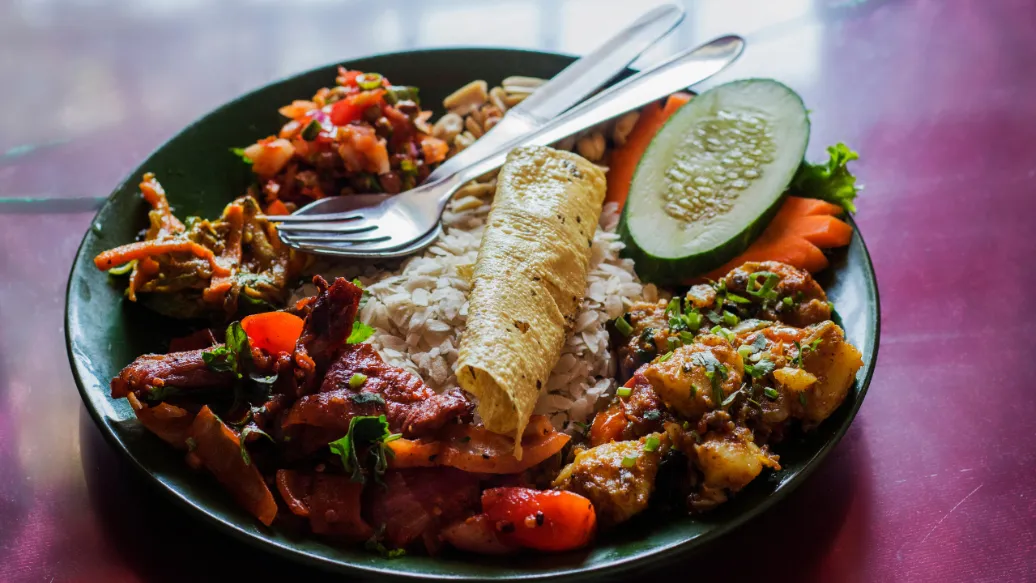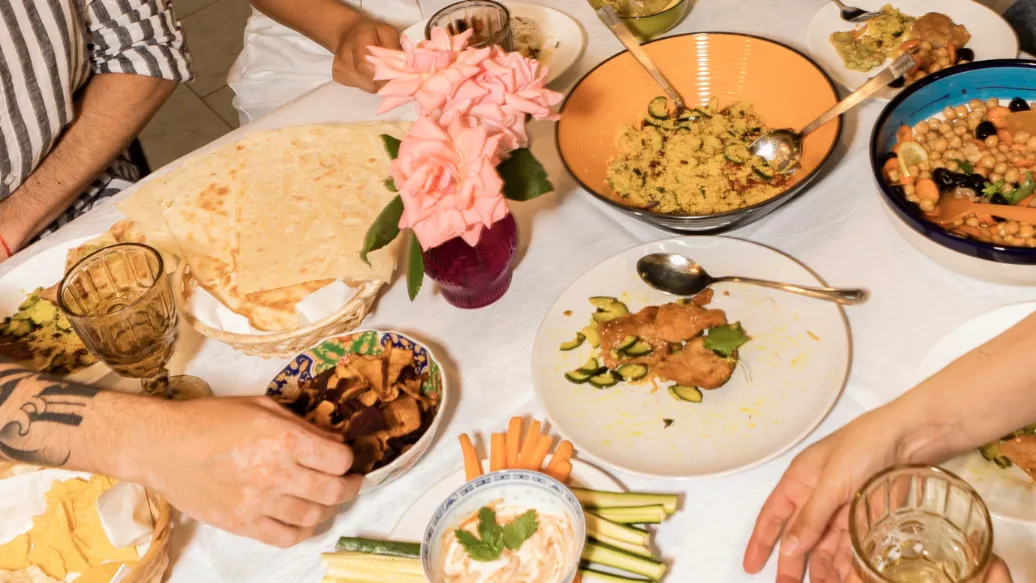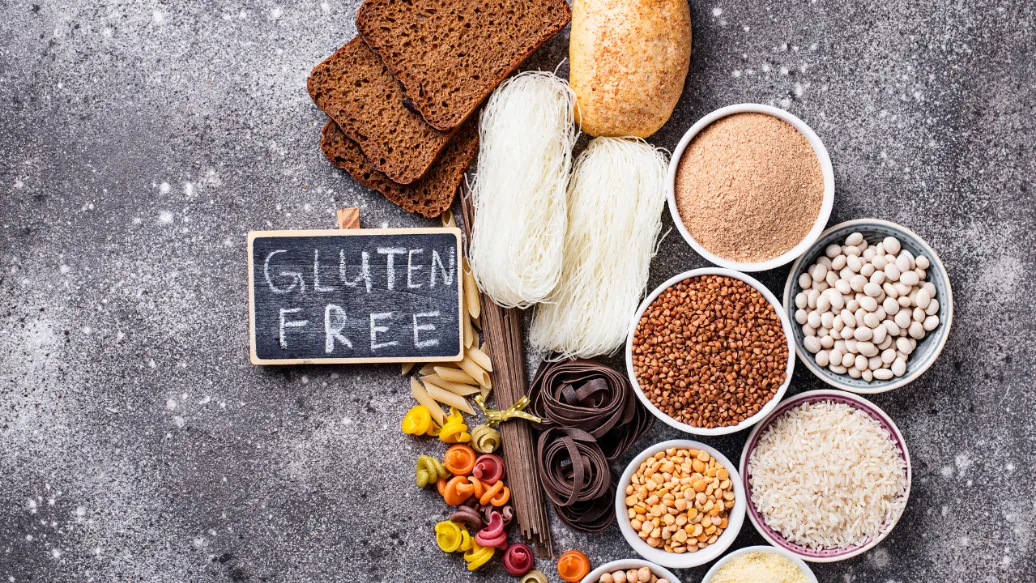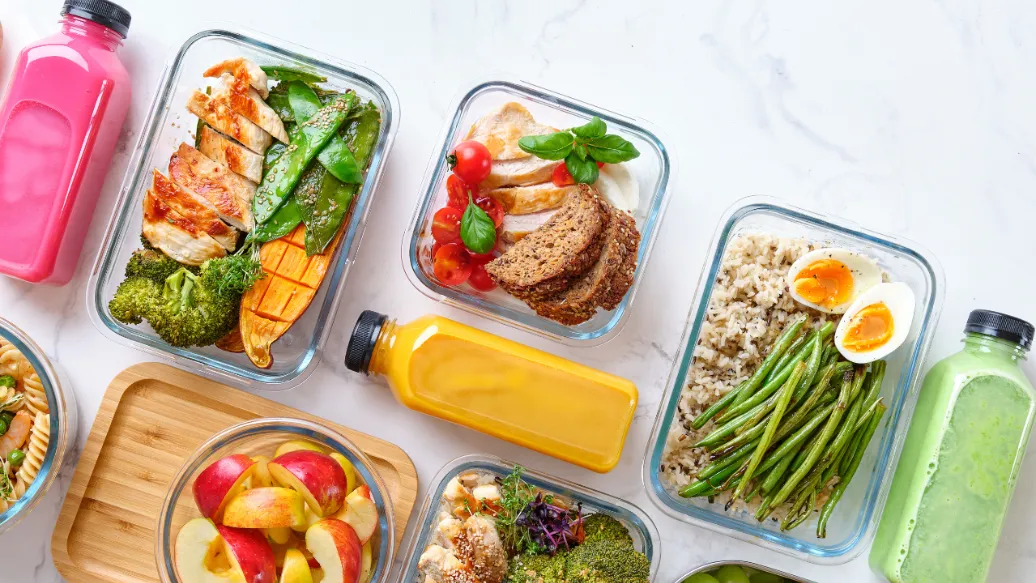Nepal vision | 24/07/2025
Trekking in Nepal is an alluring adventure with snow-capped peaks, peaceful trails, and cozy mountain teahouses.
But with all that adventure comes one practical question: what will you eat?
If you're vegan, vegetarian, or gluten-free, there's a big question you’ll want answered before hitting the trail:
Will there be food I can eat?
The good news? Yes.
The catch? You’ll need to plan just a little.
Mountain menus are simple. Ingredients aren’t always listed. And even meals that look plant-based might be cooked with ghee or served with wheat-based sides. However, don’t worry - with the right preparation, trekking with a special diet in Nepal is entirely doable.
We'll break down everything you need to know to eat well and trek strong: what kind of food you’ll find on the trail, easy meal ideas that match your diet, what to pack so you’re never caught hungry, how to make sure your dietary needs are understood, and which treks offer better food flexibility.
Why You Need to Plan Your Diet Before Trekking in the Himalayas?
When you’re trekking in the Himalayas, food choices are limited, especially if you follow a special diet like vegan, vegetarian, or gluten-free. Most trails go through remote villages where meals are basic and made with whatever ingredients are available locally. You won’t find big menus or labeled food items like you might in a city.
Another challenge is the language barrier. Teahouse owners and cooks are friendly and helpful. However, they may not always understand what “vegan” or “gluten-free” truly means. Even if you say “no milk” or “no wheat,” they may not know all the hidden ingredients in sauces or dough.
Additionally, trekking requires a significant amount of energy. You’ll be walking for hours each day, sometimes at high altitudes. If your body isn’t getting the right fuel, enough calories, protein, or clean food, you’ll feel tired, weak, or even sick. That’s why eating the right food is just as important as having good shoes or warm clothes.
So before you hit the trail, it’s smart to know what food to expect, how to explain your diet, and what snacks or supplies to bring. A little planning goes a long way in keeping you strong, safe, and satisfied on the trek.
What to Expect from Typical Trekking Meals?
While trekking in Nepal, you’ll eat most of your meals at teahouses, small guesthouses along the trail that provide both food and a place to sleep. Their menus are usually simple but filling, with a few typical dishes that are available almost everywhere.
One of the most popular meals in Nepal is dal bhat, a traditional Nepali dish consisting of steamed rice, lentil soup, and a vegetable curry. It’s served in large portions and is often available as an all-you-can-eat option, making it perfect for hungry trekkers.
Other typical meals include:
- Vegetable momos (dumplings)
- Chowmein (fried noodles with vegetables)
- Thukpa (noodle soup)
- Fried rice, boiled or fried potatoes, and other rice-based dishes
Most of these foods are vegetarian by default, especially at higher altitudes, where meat is more difficult to store. However, just because something is vegetarian doesn’t mean it’s vegan or gluten-free. That’s where you’ll need to be a bit careful.
Things to Be Careful About
There are a few common issues you might run into if you have dietary restrictions:
- Ghee and butter are often used in cooking, especially in curries, bread, and potatoes. A vegetable dish may look vegan, but it could still contain dairy.
- Cross-contamination with gluten can happen easily. For example, the same pot might be used to cook wheat noodles and rice, or a spoon used in flour might be reused in another dish.
- Packaged foods with labels are rare in teahouses. You won’t usually see nutrition labels or ingredient lists, so it’s hard to know exactly what’s in the food unless you ask.
- Hidden ingredients can be a problem. Some sauces might contain soy sauce (which often has wheat), and breads or noodles may contain milk, eggs, or butter without being listed on the menu.

Vegan Trekking in Nepal
If you’re vegan, you’ll be glad to know that many traditional Nepali dishes are plant-based or can easily be made vegan. Every day meals you’ll find on the trail include dal bhat, which is rice served with lentil soup and vegetable curry, vegetable momos (steamed dumplings), fried rice with vegetables, chapati (a type of flatbread), and simple soups made with local vegetables or noodles.
These dishes form the backbone of trekking menus, offering a wide variety. However, it’s essential to note that some foods may contain hidden animal products, such as ghee (clarified butter), yogurt, or milk.
For example, vegetable curries might be cooked in ghee, or chapati might be brushed with butter, so it’s essential to ask how your meals are prepared to avoid accidentally eating dairy or other animal products.

Tips for a Smooth Trek
- Tell your guide or trekking agency in advance that you’re vegan. This gives them time to inform teahouse owners and help arrange vegan-friendly meals in advance.
- Be clear when ordering — ask if the food has any milk, butter, ghee, yogurt, or eggs. You can even learn a few basic Nepali phrases or carry a translation card to make things easier.
- Bring your vegan snacks. Items such as protein bars, trail mix, nuts, dried fruits, peanut butter, and powdered plant-based milk can help keep you full and energized, especially on longer trekking days.
- Try local fruits when available — especially in areas like Marpha (on the Annapurna trail), where fresh apples and dried apple products are common. They’re delicious, natural, and safe for vegan diets.
Gluten-Free Trekking in Nepal
If you need to follow a gluten-free diet while trekking in Nepal, there are some key things to know, both the good and the challenging aspects. Safe staple foods you can usually rely on include rice, lentils, eggs, potatoes, and fresh vegetables. These are widely available in most teahouses. However, processed gluten-free foods, such as gluten-free bread, crackers, or snacks, are not commonly found on the trail or in local shops.
You can’t count on buying them once you’re there. Most traditional Nepali dishes are made with wheat or barley flour, so it’s essential to understand what foods are safe before ordering.

Tips for Safe Eating
To stay safe on a gluten-free diet, it’s best to avoid foods like chapatis, momos, noodles, and pasta unless you bring your gluten-free versions. These wheat-based foods are common on trekking menus and can easily cause issues if you have gluten intolerance or celiac disease.
When ordering, please ensure that you communicate your inability to eat wheat, barley, or rye; these grains are the primary sources of gluten. Carry some essential gluten-free staples, such as oats, energy bars, crackers, and protein powder, with you to fill any gaps.
On the trail, it’s wise to stick to simple foods such as rice, lentils, eggs, and vegetables, and be cautious with sauces like soy sauce. These contain gluten unless specifically labeled gluten-free.
How to Communicate Dietary Needs on the Trail?
- Learn basic Nepali phrases related to your diet (e.g., “Ma dudh khandina” means “I don’t eat milk”).
- Carry printed dietary restriction cards written clearly in Nepali for easy reference.
- Inform your trekking guide in advance so they can communicate your needs to the teahouse owners.
- Politely ask about ingredients when ordering meals to double-check for hidden animal products or gluten.
- Use simple, clear language and repeat key points if necessary to avoid misunderstandings.
To wrap up, following a special diet in Nepal is manageable, but it’s not a plug-and-play approach . Proper preparation is essential to avoid surprises on the trail. Dal Bhat, the classic Nepali meal, is your universal fallback it’s filling, nutritious, and often easy to customize. Remember, respect and patience go a long way; most locals genuinely want to help you meet your dietary needs. Approach your trek with an open mind, pack your favorite snacks, and you’ll stay energized and happy throughout your journey.
. Proper preparation is essential to avoid surprises on the trail. Dal Bhat, the classic Nepali meal, is your universal fallback it’s filling, nutritious, and often easy to customize. Remember, respect and patience go a long way; most locals genuinely want to help you meet your dietary needs. Approach your trek with an open mind, pack your favorite snacks, and you’ll stay energized and happy throughout your journey.
Ready to trek with confidence and ease? Partner with Nepal Vision Treks experts in planning customized treks that cater to vegan, vegetarian, and gluten-free diets.
FAQS



![5 Most Easiest Treks in Nepal [Ranked]](https://d2i9o55ouvfvau.cloudfront.net/public/upload/64f03dcd536351693466061.webp)





